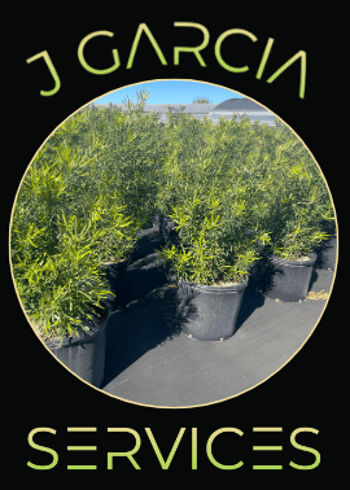“Bringing Tropical Beauty to Your Outdoors!”
The Art of Plant Installation: Elevate Your Florida Landscape
Learn how proper plant installation can bring life and balance to your landscape. From soil prep to plant placement, small details make a big difference!
4/1/20254 min read


Why Proper Plant Installation Matters
Proper plant installation is a fundamental aspect of landscaping that cannot be overstated, especially in the context of Florida's unique climate. The process of planting involves several critical factors, including soil preparation, plant selection, and positioning, each playing a vital role in the overall success of the landscaping project. When executed correctly, proper installation fosters healthy root development, ensuring that plants thrive in their new environment.
The right plant installation techniques can significantly enhance growth rates and plant vigor. By considering specific requirements such as sun exposure, soil type, and drainage, homeowners can create optimal conditions that support robust development. For instance, native Florida plants are adapted to the local climate and soil conditions, often requiring less water and maintenance compared to non-native varieties. This adaptability leads to a more resilient landscape, ultimately reducing upkeep costs and resource consumption over time.
Additionally, aesthetically pleasing landscapes make a significant impact on property value. Well-installed plants contribute to curb appeal, inviting guests and potential buyers alike. Enhancing outdoor living spaces with lush vegetation creates a more inviting atmosphere, fostering relaxation and enjoyment for families. An appealing landscape not only adds to the beauty of a property but also increases its marketability and value in a competitive real estate market.
Moreover, the long-term benefits of proper plant installation extend beyond visual appeal. For Florida residents, a thoughtfully designed landscape can provide functional benefits such as shade, windbreaks, and improved microclimates around homes. By prioritizing correct installation, homeowners can ensure their landscaping not only meets aesthetic desires but also enhances the quality of life through practical benefits. Therefore, investing time and effort into proper plant installation is crucial for achieving a vibrant and sustainable Florida landscape.
Choosing the Right Plants for Your Landscape
When considering plant installation in Florida, it becomes essential to select the right plants that align with the region's unique environmental traits. One of the primary factors to evaluate is whether the plants are native to Florida. Native plants are inherently adapted to the local climate, soil conditions, and wildlife. They typically require less maintenance and are more resistant to diseases and pests. By incorporating native species, you not only enhance the ecological health of your landscape but also create a vibrant habitat for local fauna.
Furthermore, Florida's climate presents specific challenges, such as high temperatures and occasional droughts. Understanding these nuances is crucial for choosing plants that can withstand intense heat and limited water availability. Drought-resistant plants, such as certain varieties of succulents, ornamental grasses, and native perennials, should be high on your list if you aim to create a low-maintenance landscape. They not only conserve water but also provide striking visuals throughout the year.
Compatibility with existing garden elements is another vital consideration. Assess which plants will harmonize with your current landscape design, paying attention to height, color, and texture. Incorporating a mixture of ground cover, shrubs, and trees can add depth and dimension to your landscape. For instance, pairing taller plants with shorter varieties can enhance visibility while creating a natural flow. Additionally, consider how the plants will look throughout different seasons, ensuring aesthetic appeal year-round.
In your quest to curate the perfect Florida landscape, careful selection of plants facilitates a balance between functionality and beauty. Prioritize plants suited to the local climate, while ensuring they complement each other and the existing landscape elements. This strategic approach will ultimately yield a thriving and visually appealing garden.
Soil Preparation: The Foundation of Healthy Plants
The significance of soil preparation cannot be overstated when it comes to successful plant installation. In Florida, where sandy soils are prevalent, proper soil preparation is crucial for establishing a thriving landscape. One of the first steps in this process is conducting a soil pH test. This assessment is vital, as different plants thrive in varying pH levels. Typically, a pH range of 6.0 to 7.0 is ideal for most garden plants. Utilizing a simple soil test kit, you can gauge the acidity or alkalinity of your soil, informing necessary amendments to foster optimal growing conditions.
Once you have established the pH level, the next step is to amend the soil with organic matter. Incorporating well-rotted compost, aged manure, or peat moss enhances soil structure, improving nutrient retention and moisture-holding capacity. These amendments are particularly beneficial in sandy soils, which often lack the organic material necessary to support healthy plant growth. Adding organic matter also aids in the establishment of beneficial microorganisms, which play a vital role in creating a balanced ecosystem for plants. Aim for a 3 to 4-inch layer of amendments mixed into the top 12 inches of soil for the best results.
Moreover, ensuring good drainage is equally essential. Sandy soil generally drains quickly, which might be advantageous in preventing root rot, but can also lead to inadequate moisture retention. To improve drainage without sacrificing hydration, incorporating materials like perlite or vermiculite can help create a balance. Additionally, installing raised beds can enhance drainage and make soil preparation easier. By taking these steps to prepare the soil adequately, you lay a solid foundation for your plants, ultimately enhancing their growth, longevity, and resilience in Florida's unique climate.
Climate Considerations for Plant Growth
Florida's unique climate plays a critical role in determining the success of plant growth and longevity. The state's subtropical and tropical conditions present various challenges, primarily due to high humidity, intense heat, and seasonal fluctuations. These elements influence not only plant health but also the selection process for suitable species and their placement within a landscape.
The humidity levels in Florida can promote the growth of mold, mildew, and pests, which can adversely affect plant vitality. It is essential for landscapers and gardeners to choose plant varieties that are resistant to these common issues while also thriving in moist environments. Additionally, consistent exposure to elevated temperatures can lead to heat stress in certain plants, which may require more frequent irrigation and careful placement to ensure they receive adequate shade during peak sun hours.
Seasonal variations further complicate the plant installation process. The subtropical climate gives rise to a distinct wet and dry period that influences water availability and plant growth cycles. During the dry season, plants may need additional watering or mulch to retain soil moisture, while in the wet season, drainage must be considered to prevent root rot. Awareness of these patterns allows for better planning and management of landscape installations.
Opting for professional assistance in plant installation can yield significant benefits, particularly in navigating the complexities of Florida's climate. Experienced landscapers possess a deep understanding of local soil types, moisture levels, and sunlight exposure, allowing for optimal plant selection and placement. This expertise enhances the health of the plants and contributes to a visually appealing and sustainable landscape, ensuring that it flourishes despite the challenges posed by Florida's ever-changing climate.
Landscaping Services
Transforming outdoor spaces with vibrant plant installations.
Contact Us
Suscribe to our News Letter
© 2025. All rights reserved to J GARCIA SERVICES LLC.
Call:
Email:
Hours:
Mon - Sat
7:00 AM - 5:00 PM







Follow Us:
